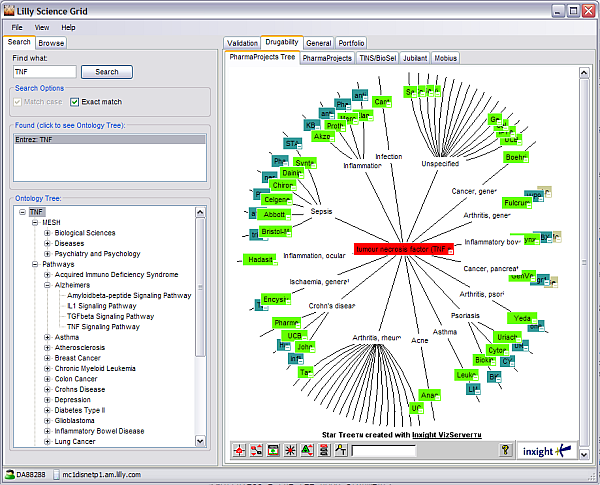Pharmaceutical researchers need to be able to have access to an integrated view of all of their data in order to be able to make effective decisions as to which drug targets and compounds to pursue. Companies want to minimize costly late-stage attrition by identifying and eliminating drugs that do not have desirable safety profiles or sufficient efficacy as early on as possible. The need for effective data integration has become stronger as the cost of drug discovery and development has soared to over $1 billion.
The integration of data, however, has proven to be far from straightforward. Data commonly originates in different departments in which varying terminologies are used. Further, the data itself is very heterogeneous in nature, and consists of data types that include electronic patient records, chemical structures, biological sequences, images, biological pathways, and scientific papers. Many companies have attempted to create data warehouses that contain all of this data, but many have found this approach lacking the flexibility required within a scientific discipline. Consequently, many pharmaceutical companies are exploring the use of the Semantic Web for data integration.

Figure 1: The screen snapshot illustrates the user interface of the Target Assessment Tool within Lilly Science Grid. The panels to the left of the screen snapshot show that it is possible to directly search for a term or to navigate the ontology to identify a term of interest. The panel to the right of the screen snapshot demonstrates a graph view of data within the PharmaProjects Tree as it relates to the search term. (A larger screen dump is also available.)
Eli Lilly uses the Semantic Web to extend the capabilities of the Target Assessment Tool. Senior scientists at Eli Lilly use this tool to more objectively evaluate and prioritize drug targets by enabling a parallel assessment of candidate profiles across many scientific and business dimensions of interest. The Semantic Web facilitates this integrated approach to evaluating candidates, allowing the tool to better prioritize potential drug targets.
The Target Assessment Tool is part of Lilly Science Grid, which is a drug discovery infrastructure that has been built using Microsoft’s Composite Application Block technology. The implementation uses internally developed ontologies, and industry standard terminologies such as MESH. The ontologies are stored within the Oracle RDF Data Model, and link to the diverse data sources that require integration.
The interface to the Target Assessment Tool allows scientists to either search directly for a given term, and to then see all related data, or they can navigate to the term of interest through the ontology. At times the results of queries display a set of entities as a graph in order to assist the user in visualizing and navigating among the relationships between the entities. This approach enables scientists to discover information as they navigate through available knowledge, rather than necessarily having to have a specific query in mind at the outset. A screen snapshot of the Target Assessment Tool is shown in Figure 1.
© Copyright 2007, Eli Lilly